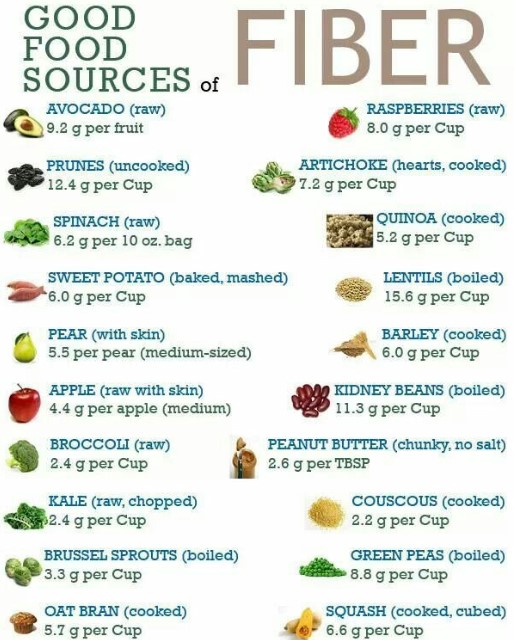BOURSESSENEGAL – Fiber is an essential part of a balanced diet, yet many people struggle to consume enough of it daily. Including good sources of fiber in your meals can improve digestion, help maintain a healthy weight, and even lower the risk of chronic diseases. In this article, we’ll explore various fiber-rich foods, their benefits, and how to incorporate them into your daily routine.
What Is Fiber and Why Is It Important?
Fiber is a type of carbohydrate that your body cannot digest. Unlike other carbohydrates, fiber passes through the digestive system relatively intact. It helps regulate the body’s use of sugars, helping to keep hunger and blood sugar in check. Consuming adequate fiber can lead to numerous health benefits, including:
- Improved Digestion: Fiber aids in maintaining regular bowel movements and preventing constipation.
- Weight Management: High-fiber foods often require more chewing and take longer to eat, promoting satiety and reducing overall calorie intake.
- Lower Cholesterol Levels: Soluble fiber can help lower cholesterol levels, reducing the risk of heart disease.
- Blood Sugar Control: Fiber slows down the absorption of sugar, helping to improve blood sugar levels.
Daily Fiber Recommendations
The daily fiber intake varies based on age and gender. Generally, adult women should aim for 25 grams per day, while men should target around 38 grams. However, most people consume only about half of this recommended amount. By incorporating more good sources of fiber into your meals, you can easily meet and even exceed these guidelines.
Good Sources of Fiber
1. Fruits
Fruits are not just delicious; they are also packed with fiber. Here are some top choices:
- Raspberries: One cup contains about 8 grams of fiber. They are perfect for smoothies or as a topping on yogurt.
- Pears: A medium pear with its skin has around 5.5 grams of fiber. Enjoy it as a snack or in salads.
- Apples: One medium apple contains about 4.5 grams of fiber. Try eating it raw or baking it for a warm dessert.
2. Vegetables
Vegetables are another excellent source of fiber. Incorporate these into your meals:
- Broccoli: One cup of cooked broccoli provides about 5 grams of fiber. Steam or stir-fry it for a nutritious side dish.
- Carrots: A medium carrot contains around 1.5 grams of fiber. Snack on them raw or add them to soups.
- Brussels Sprouts: One cup of cooked Brussels sprouts has about 4 grams of fiber. Roasting brings out their natural sweetness.
3. Whole Grains
Whole grains are fantastic sources of fiber, offering more nutrients than refined grains. Here are some to consider:
- Oats: A cup of cooked oats provides about 4 grams of fiber. Start your day with oatmeal topped with fruits and nuts.
- Quinoa: This versatile grain contains around 5 grams of fiber per cup. Use it in salads or as a base for a grain bowl.
- Whole Wheat Bread: One slice typically has about 2 grams of fiber. Choose whole grain varieties for sandwiches or toast.
4. Legumes
Legumes are powerhouse foods when it comes to fiber. They are not only rich in fiber but also provide protein. Consider these options:
- Lentils: One cup of cooked lentils contains about 15.5 grams of fiber. Use them in soups, salads, or as a meat substitute.
- Chickpeas: One cup provides around 12.5 grams of fiber. Add them to salads or make hummus for a tasty dip.
- Black Beans: With about 15 grams of fiber per cup, black beans are excellent in tacos, burritos, or chili.
5. Nuts and Seeds
Nuts and seeds offer healthy fats along with fiber. Here are some of the best options:
- Chia Seeds: Just two tablespoons contain about 10 grams of fiber. Add them to smoothies or use them in chia pudding.
- Almonds: A one-ounce serving has about 3.5 grams of fiber. Snack on them raw or add them to trail mix.
- Flaxseeds: Two tablespoons of ground flaxseeds provide around 5 grams of fiber. Sprinkle them on yogurt or incorporate them into baked goods.
How to Incorporate More Fiber into Your Diet
Start Your Day Right
Kick off your morning with a high-fiber breakfast. Choose oatmeal topped with fruits, or whole grain toast with avocado. These options not only provide fiber but also keep you satisfied longer.
Snack Smart
Replace unhealthy snacks with fiber-rich options. Consider carrot sticks, apple slices with nut butter, or a handful of almonds. These snacks are not only filling but also nutritious.
Make Small Changes
Swap out white bread for whole grain, or replace white rice with quinoa or brown rice. These small adjustments can significantly increase your fiber intake without requiring drastic changes to your diet.
Experiment with Recipes
Try new recipes that emphasize fiber-rich ingredients. Look for dishes that include beans, lentils, or whole grains. You’ll discover a variety of tasty options while boosting your fiber consumption.
Be Mindful of Fiber Intake
While it’s essential to increase fiber intake, do so gradually. A sudden increase in fiber can lead to digestive discomfort, such as bloating or gas. Aim to increase fiber by 5 grams per day until you reach the recommended levels.
Stay Hydrated
Drinking plenty of water is crucial when consuming more fiber. Fiber absorbs water, which helps to keep things moving smoothly through the digestive tract. Aim for at least eight cups of water daily to support your increased fiber intake.
Conclusion
Incorporating good sources of fiber into your diet offers numerous health benefits. From improved digestion to better blood sugar control, fiber plays a crucial role in maintaining overall wellness. By choosing a variety of fruits, vegetables, whole grains, legumes, and nuts, you can easily meet your daily fiber needs. Remember to increase fiber intake gradually and stay hydrated to enjoy the full benefits. Embrace the journey towards a healthier diet, and savor the delicious options that fiber-rich foods provide!
REFERENCE : https://www.cdcfoundation.org/



